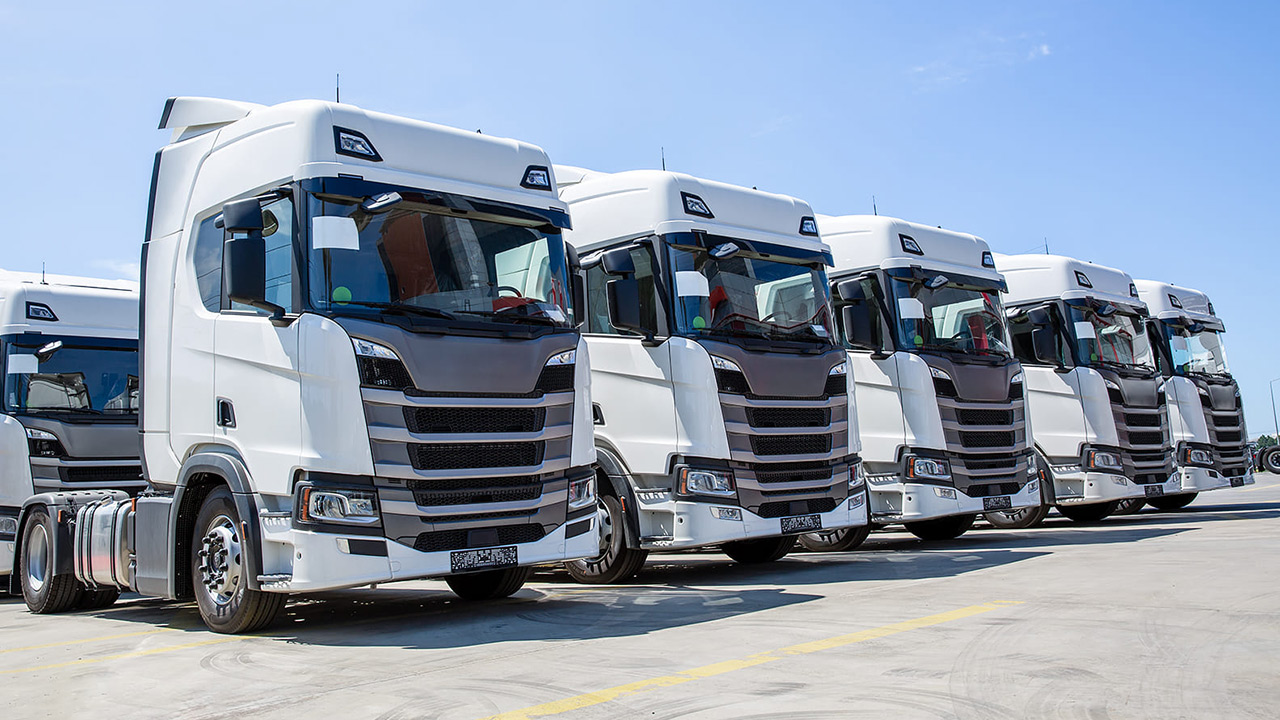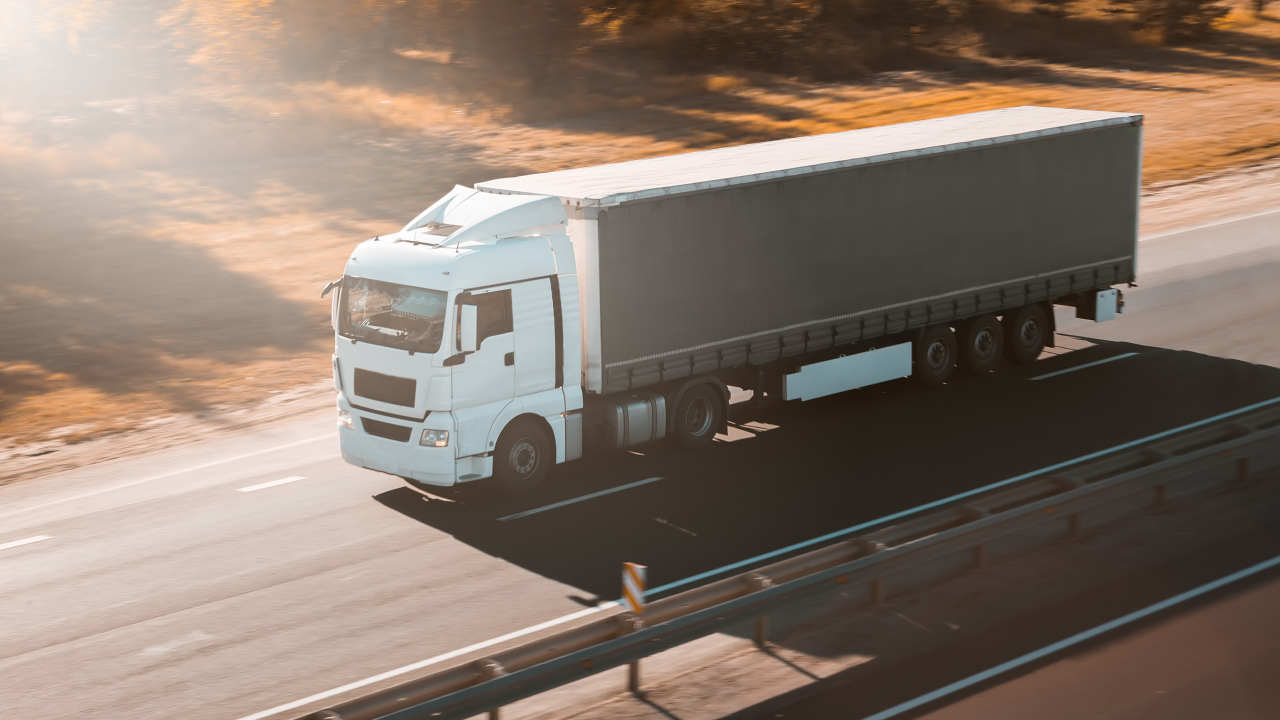As a telematics service provider (TSP), you know how amazing fleet telematics can be. However, explaining it to your sales team or potential clients can be a real challenge. And if they don’t get it, they might miss how telematics can make any business better.
Sure, the internet has many guides on the basics of telematics. But we've found that most are too technical or don't cover the practical side of telematics fleet management. This can leave your team and clients confused and unable to appreciate its true value.
That’s where we come in. In this blog post, Wialon offers a simple guide to telematics and fleet management. It's packed with key info, real-life examples, and answers to common questions. Use it for your marketing activities or as a handy training tool.
__CTA_BANNER_TM1__
Who needs telematics for fleet management?
So, you’re on the lookout for new clients to offer your telematics and fleet management services to.
Your potential clients include:
- Logistics or transportation businesses
- Rental and leasing companies
- Public transportation services
- Car sharing and other smart mobility projects
- Municipal services, like waste collection and road maintenance
- Emergency services
- Non-profit organizations
And many more. When we share a bit more about the benefits of telematics for fleet management and fleet digitalization, you’ll see that the list of potential clients is huge, and opportunities are waiting just around the corner.
What is fleet telematics?
Telematics is a term you hear a lot, but do you and your clients really know what it means? It’s important to be on the same page. Let’s break it down and make it clear.
Fleet telematics is a technology that tracks and displays a vehicle's metrics in real time.
These metrics can be traditional, like location, speed, or fuel consumption. They can also be more specific. For example, you might track battery levels in electric vehicles (EVs), monitor temperature in refrigerated vehicles, or check vehicle weight for compliance with road limits.
Why is tracking important for managing a fleet? Because “what gets measured, gets managed” — it's the first step toward improving things in the long run.
Telematics vs. fleet management vs. GPS tracking
Telematics isn’t the same as fleet management or GPS tracking.
What’s the difference between telematics and GPS? GPS is a technology that tracks a vehicle's location using satellites. It simply shows you where a vehicle is on a map. Telematics, however, is much broader. It gathers information from various sensors (including GPS) about the vehicle. It doesn’t just tell you the location; it also tracks speed, fuel use, driver behavior, and more.
What’s the difference between telematics and fleet management? Fleet management is much more than telematics. It’s a broad area that covers all aspects of vehicle operations, from buying and maintaining cars to driver monitoring. Its final goal is to get the best performance from the fleet. Telematics is a technology that helps with this. It provides real-time data on how vehicles and drivers are performing and shows how the fleet is running overall. And sometimes, this is enough. But other times, organizations need more, so fleet managers may also use additional technologies.
For example, Wialon is a fleet management and telematics platform that handles key tasks like tracking vehicles, fuel, and driver behavior. This covers most needs. But some fleets have specific ones: claims management, compliance, accounting, and so on. For these, they use specialized software. Wialon integrates with these systems to ensure everything works together smoothly.
How does telematics work?
So, telematics is a tool to monitor vehicles and track all the data they generate. Basically, it gathers vehicle data from various sources, processes it, and presents the results in a clear and comprehensive way.
Here’s the breakdown of each step.
Data collection
To gather data about each parameter of a car in operation, a telematics system needs devices like trackers, sensors, or other hardware. These devices can be:
- Integrated, which are installed at the factory by their original equipment manufacturer (OEM). Many new cars come equipped with built-in tracking systems.
- Aftermarket, installed later. These devices typically retrofit older vehicles without integrated telematics technology or add extra data to what integrated devices collect.
Devices include location trackers, fuel level sensors, temperature sensors, accelerometers, RFID (Radio Frequency Identification) tags, tachographs, dash cameras, event recorders, Bluetooth or Wi-Fi beacons for asset tracking, and more.
Aftermarket and OEM telematics competed for decades. Now, OEMs are actively including aftermarket telematics in their strategies. Check out Aliaksandr Kuushynau's Forbes article for more on this trend.
Data transfer
The next big question is how to send data from where it’s captured, i.e. a vehicle, to a telematics fleet management system.
There are several popular methods to transmit this data, and the telematics platform can work with any of them:
- Cellular communication technologies. This is the most common method that uses mobile networks to transmit data from the vehicle. Examples include 3G, 4G LTE, and 5G. To use these networks, devices need a physical SIM card or eSIM.
- Satellite communication technologies. This method doesn't need towers, so it is perfect for remote areas. Data is sent from the vehicle to satellites, which then relay it to land stations and finally to receiving devices. For this, devices need to be satellite-enabled or dual-mode trackers.
- Wi-Fi. Wi-Fi is an option for short-range data transmission. The vehicle needs to have an onboard Wi-Fi module or be within reach of a Wi-Fi access point, no cellular networks needed.
What to do when vehicles are in areas with no connectivity? Telematics devices typically store this data in a black box, similar to those on airplanes, until they regain a signal and can send it back.
Data storage
Using one of the communication technologies, vehicle data is sent to the telematics platform. The platform, which can be cloud- or server-based, collects, analyzes, and displays the data.
While cloud telematics solutions are more popular, some companies still need server-based telematics. They might need on-site solutions for better data security, because of poor internet, or to follow regulations.
Fleet telematics analytics
The platform processes the data and shows it in various ways on a computer in the office or a phone in the field.
- Maps. They show where vehicles are and where they're going.
- Dashboard charts and graphs. They visualize important numbers and make it easy to understand the data quickly.
- Reports. They give detailed explanations and analyses of the data over time.
- Notifications. These send immediate alerts for critical events or anomalies.
Further use
Users can access this data in any format they want and use it to find answers to many questions.
According to feedback from Wialon partners, here are some common questions that telematics helps address:
- How can we save on fuel?
- What's the best way to prevent breakdowns and downtime?
- How do we find the quickest delivery route?
- How can we make our driving safer and cut down on accidents?
Main features of a telematics fleet management system
Here is a list of the most popular features of advanced telematics systems that help fleet owners improve their fleet’s operation.
Real-time tracking
This is the most basic feature of any fleet management system, the first step into a fleet’s bigger visibility. It helps track a vehicle's precise location on a digital map.
Geofencing
This feature lets fleets set up specific zones for special purposes. For example, a company might designate an area for deliveries or mark off restricted zones for security reasons. When a vehicle enters or leaves these zones, the system sends an alert. This helps managers respond quickly to prevent any issues.
Fuel control
Fuel consumption is the biggest cost for fleets. This won’t change until everyone switches to electric fleets, which could take years. Meanwhile, fleet owners rely on telematics to track and calculate fuel use precisely.
Instant notifications
These notifications serve various purposes: from emergency SOS alerts if a driver is attacked, to alerts from telematics systems detecting drowsy driving, and notifications about any needed actions.
Maintenance alerts
When it comes to repairs, telematics steps in to prevent breakdowns and unscheduled repairs. Telematics uses vehicle diagnostics and tracks how vehicles are driven. Then, it gives early warnings about maintenance needs.
Route optimization
Telematics analyzes data to find efficient routes: ones where drivers move fast, use less fuel, and avoid traffic delays. And when telematics connects with apps for weather or traffic updates, it adjusts routes instantly to avoid accidents or congestion.
Top 5 benefits of telematics
Now, let’s talk about the benefits. After all, telematics is an investment. Naturally, fleets want to know what return on investment they can expect.
Cost savings
Running a fleet is an expensive business, and every owner wants to reduce their spendings. The main cost factors include:
- Fuel consumption
- Maintenance and repairs
- Fines from drivers
- Fines for non-compliance
- Vehicles stolen or lost
Telematics helps cut down on these costs and make a business more stable. When you don’t have unexpected and unreasonable operational spendings, you can use your resources better, explore new ideas, and invest in what will pay off.
Example. Lebanon’s leading fuel importer reduced fuel costs by up to 23%, thanks to real-time fuel consumption monitoring and video telematics.
Improved efficiency
Making fleet management more efficient isn’t just about being faster. It’s about improving overall performance. This includes delivering on time to meet customer needs. It also means cutting fuel costs, reducing vehicle downtime, and boosting driver safety.
Example. A leading provider of cold chain IoT solutions in the UAE used the Wialon telematics fleet management platform to optimize routes and reduce driver downtime. As a result, they achieved a 98.2% success rate for guaranteed next-day deliveries, compared to the industry standard of 70%.
Proactive safety
In fleet management, safety is key. It means preventing accidents and ensuring driver well-being. Following regulations is important too. This helps build a culture of safety within the company that will protect both drivers and assets.
Example. An international energy company improved driver behavior monitoring and compliance with labor law regulations by 95% using notifications and video telematics from their telematics system.
Effective asset management
Effective asset management means making the most of available resources. Telematics helps by tracking where assets are. It also improves how assets are used, cuts maintenance costs, and makes them last longer.
Example. A company that specializes in the transportation of copper ore increased its revenue by 15%. They used GPS telematics for dump trucks and found they could carry more ore without damage. This saved them from buying new, expensive dump trucks.
Data-driven insights
Of course, telematics and fleet management don't just handle operational issues. More importantly, they help build strategies. These strategies are based on data, operational transparency, and insights. As a result, businesses can improve their planning, streamline workflows, and stay competitive.
Example. An ice cream company in Sri Lanka saves over 35% on labor and transport costs with a transportation telematics system. The system controls the temperature in containers, reducing cases of melted ice cream. As a result, the company doesn't need to ship replacements for spoiled products.
What do telematics services include?
Clients have different needs for telematics solutions. So, it’s important for both you and your customer to understand what they need now and where they want to go.
Level 1: Tracking parameters
Many businesses start small. They need simple solutions that track specific parameters to save money, avoid fines and stay compliant.
- Tachograph rules. These rules regulate driving and rest periods. They’re becoming stricter in the EU, especially with the 2024/1258 updates that change minimum breaks and rest periods. In the US, these rules are also stringent under the 2017 ELD mandate. Fleets can get big fines if drivers don't follow rules for working hours, driving time, and breaks.
- Load tracking requirements. They dictate the maximum weight a forklift or vehicle can safely handle. Telematics helps monitor this with weight sensors, alerts in real-time, and regular reporting of load data. This helps fleet managers oversee and ensure compliance with load regulations.
- CO2 emission control. Fleets must comply with strict sustainability regulations to avoid fines. The EU has already adopted many legal acts on detailed CO2 reporting that applies to all large enterprises that do business in the EU — even those based outside of the EU — starting in 2024. The US is also gearing up to implement similar regulations. So, the global demand for tracking and reporting CO2 emissions is growing.
Wialon comes with tools to calculate your fleet's carbon footprint. You can select a pre-set formula or customize one according to your needs. Find out more on the Wialon blog.
Level 2: Improving fleet productivity
Basic tracking helps businesses grow. The more they grow, the more complex their operations become. And with that complexity come more serious problems.
Their fleet doubles, then triples. And soon businesses start running into problems with route planning, vehicle maintenance, and keeping drivers safe across a much larger operation. This is where they need more advanced solutions.
At Wialon, we've seen this happen plenty of times.
Here’s an example from our partner. They started by tracking cooler machines for a big client in Lebanon. But soon, the client faced more complex challenges: dealing with different power sources, unoptimized routes, no driver monitoring, and fuel theft. Since telematics proved reliable, they decided to use it for more than just tracking. The TSP implemented video monitoring inside the trucks to keep an eye on drivers, set up reports and notifications, added driver identification, and helped with route optimization.
“We almost used every single feature available at Wialon. After 6 months, driver compliance was 100%. They saved 23% on fuel, had zero driver-related accidents, and cut tickets by 60%.”
Peter Chalhoub, Regional Sales Manager at MaliaTec
Level 3: Automation of everything
At the next step, businesses want to integrate more sophisticated telematics systems. These systems not only track and analyze data in real-time. They begin to take over routine tasks entirely.
What can it be? Automation opportunities are endless. Here are just a handful of examples:
Example 1. A company works with third-party carriers to transport its products. It implemented automated vehicle access control and equipped it with proximity sensors and an RFID reader. This setup tracks the entry and exit of vehicles and the time spent on the premises.
Example 2. A company in the Middle East specializes in mine exploration, extraction, and mineral exporting. It operates a fleet of 1,000 vehicles. The company implemented a mining tracking system to address inefficient distribution of vehicles. The solution automates dispatching of mining machines for drilling, extraction and road construction.
Example 3. A state executive body wanted to integrate electronic services into public transportation. It adopted the public transport management system by Wialon. The solution monitors a passenger flow, automatically creates and adjusts bus routes and schedules, and optimizes routes in response to traffic jams, roadworks, and other events.
Does telematics stop here? Certainly not. We're stepping into the next level.
What is the future of telematics fleet management?
Businesses choose their TSPs carefully and look for long-term partners. To win them over, you need to show you can handle both their current and future needs.
With Wialon, that’s easy. We’re always adding new features to keep your service in line with their evolving needs.
AI for automation and better decisions
At Telematics Vilnius 2023, a traditional annual conference for the Wialon community, Gurtam CEO Aliaksei Shchurko spoke about AI's role in fleet management. AI can give personalized suggestions, automate routine tasks, and make fleet management easier. For example, an AI chatbot can detect anomalies in reports and provide recommendations.
How Wialon stands out in AI: AI is a big focus for Wialon to develop our platform further. Step by step, we’ll be gradually integrating AI-driven automation. Stay tuned!
New parameters for electric vehicles (EVs) and more sustainable fleets
The shift towards sustainability in fleet management is becoming crucial. Governments are pressing for big cuts in pollution and plan to stop selling gas and diesel cars by 2035.
But switching to green fleets is expensive. Now, smaller fleets can’t afford to go all-in on electric or autonomous vehicles.
Telematics helps fleets start small and smart. It tracks carbon emissions and finds ways to cut them down. Also, it's looking into new ways to make electric vehicles in some fleets more efficient.
The challenge is that this requires high-tech tools that not all telematics systems have yet.
How Wialon stands out in green fleet initiatives: In 2023, we added a built-in feature for our clients at no extra cost — automatic CO2 calculation. This year, we've also started measuring battery levels in EVs. We're continuously adding more eco-friendly features and planning to innovate further.
Video telematics for driver safety and legal compliance
Berg Insight calls video telematics a big trend in fleet management. It's growing faster in the US and EU than overall telematics, with rates of 19% and 18% respectively.
As hardware and connectivity get cheaper, video telematics is becoming more affordable. This makes it easier for TSPs to explain its benefits to potential customers and seal deals.
How Wialon stands out in video telematics: Back in 2021, Wialon released the first edition of a video telematics solution. It merged various video features into one package. Since then, we've been continuously upgrading it, integrating more mobile DVRs and vehicle cameras and improving the interface.
__CTA_BANNER_TM2__
Summary
We hope this info helps you sync up with your future client. In our blog, we regularly share expert advice on telematics and fleet management, talk about our events, and publish updates and announcements. Check it out and sign up to stay updated on fleet management trends and news from our community.
At Wialon, we're here to help our partners learn and grow their businesses. Take a look at the training and certification opportunities we offer.
Develop your expertiseLooking for a reliable solution for your telematics services? Wialon is trusted by 2,700+ partners around the world.
Join our communityFAQs Wialon partners often hear
Wialon is software for fleet digitalization used by 2,700+ partners. We know that our partners often face similar questions from their clients. So, we’ve prepared answers to them. Feel free to use them in your work.
Can I install telematics myself? Do I really need a TSP to help me with this?
Clients might see you as an unnecessary middleman charging a commission fee. It’s important to explain that TSPs do more than just install trackers. They are strategic partners who identify needs and turn them into practical solutions with measurable results.
Often, they spot areas for improvement that business owners might miss. For example, a TSP can help clients save thousands of dollars by recommending more affordable and efficient hardware.
Plus, there might be other restrictions. For example, Wialon only works through TSPs and not directly with clients. This is our policy: we trust telematics professionals to create the best solutions. In turn, we provide you with the best fleet digitalization tools. As a result, we all work together seamlessly as part of one ecosystem.
Is telematics expensive? What's the total cost going to be?
Of course, it’s up to you to provide an accurate calculation. But we suggest mentioning that some companies save $35,000 per month thanks to a transport monitoring system. And that’s just the start — the potential savings can be higher.
What devices do I need to install?
Sometimes, platforms work with specific hardware. Others, like Wialon, integrate with almost any device.
I already have other software running. Is your solution going to mess up what I already have?
It depends on the platform you choose. With Wialon, the answer is “no.” It has an open API and can easily connect with different types of software, including ERP (Enterprise Resource Planning), CRM (Customer Relationship Management), and accounting software. In fact, many of our partners chose Wialon because it doesn't create compliance issues.
Security is crucial for my business. How can I be sure telematics data won't leak and ruin our reputation?
This is up to you as a TSP to make sure that you work with a reliable telematics and fleet management platform. With Wialon, we prioritize data safety by adhering to ISO-certified information security standards, and constantly working on security updates.



.jpg)

